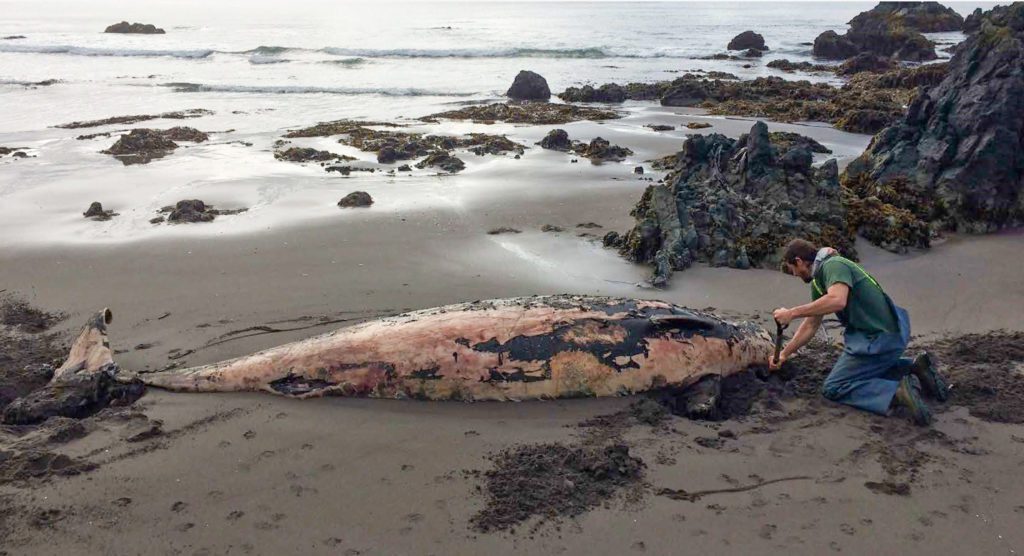
Federal fisheries scientists are still trying to determine what caused the deaths of eight stranded female Stejneger’s beaked whales off Adak Island in the Aleutians in the summer of 2018, and whether seismic activity in the area was involved. A new research paper from NOAA Fisheries suggests that seismic activity may well have been involved, but researchers have not been able to confirm for sure the source of any such seismic event.
What they do know is that on Aug. 3, 2019 a man named Tom Spitler discovered a dead whale on the shores of NavFac Beach. He photographed the carcass and showed the photos to his wife, Lisa Spitler, a biological technician stationed on Adak with the Alaska Maritime National Wildlife Refuge, who reported the stranding to NOAA Fisheries. Biologists there determined through the photos that this was a rare occurrence involving an adult female Stejneger’s beaked whale.
Five days later Adak resident Eddie Wine found seven additional stranded beaked whales floating among rocks on Palisades Point on Asak, just 1.2 miles northeast of the carcass found earlier. The Spitlers photographed these carcasses and reported them to NOAA Fisheries.
NOAA marine mammal experts determined that these whales also were Stejneger’s beaked whales and sent an experienced stranding response team to investigate.
According to NOAA Fisheries veterinarian Kate Savage, there have been at least 74 Stejneger’s beaked whale strandings in 42 separate events in Alaska since the discovery of this species, a deep-diving whale found in the North Pacific Ocean. The species was first documented based on the skull of a young whale found in 1883 on Russia’s Bering Island by Leonhard Stejneger, a Norwegian-born American ornithologist, herpetologist and zoologist.
The first documented specimen found in Alaska was a single piece of the lower jaw found in the easter Gulf of Alaska in 1927.
NOAA Fisheries veterinarian Dr. Kate Savage, lead author of the paper on whale strandings, said the information in the paper is critical for understanding the baseline condition of this elusive species in the face of a warming ocean.
Findings central to researchers’ understanding of this species include a sex bias. Twenty-two of the 26 Stejneger’s beaked whale carcasses stranded since 1995 in which sex could be determined were female and four were male. Researchers also found that the species’s diet is predominantly squid, based on examination of stomach contents of 17 whales by the Alaska Department of Fish and Game. One stomach examined from one of the whales stranded in the Aleutians also contained a plastic cup lid likely ingested incidentally while targeting prey, the report said.
The report notes that strandings of deep-diving whales, such as beaked whales, have been causally linked to mid-frequency active sonar use by military operations. There are two types of sonar, passive and active. Passive sonar is a listening device used to determine the presence, characteristics and direction of marine noise sources. Passive sonar equipment is essentially an acoustic receiver that emits no sound and has no potential to disturb marine life.
Active sonar is used to determine relative positions of submerged objects, ranging from submarines to fish, mines and wrecks of ships and aircraft, and the sea floor, by emitting a sound signal and listening for echoes from the objects. Active sonar devices locate objects by the reflection of sound waves and are considered an important means of underwater detection and navigation.





